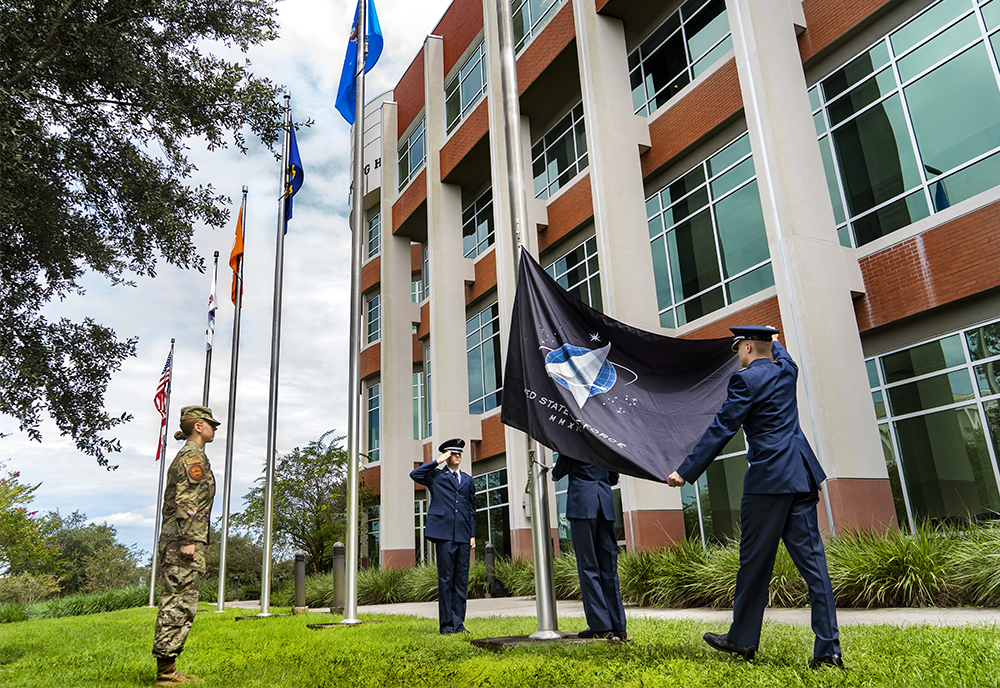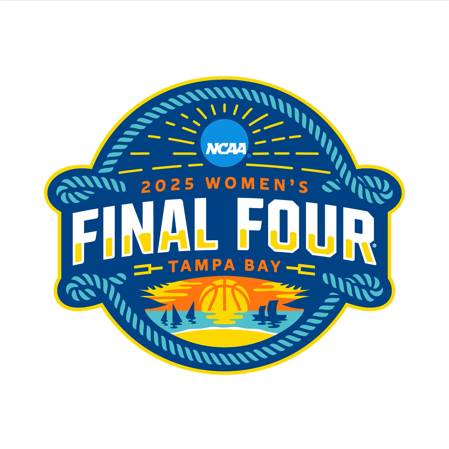Pictured above: AFROTC color guards raised the United States Space Force flag in a special ceremony at USF’s Joint Military Leadership Center.
Courtesy of USF
By Aubrey Carr
The United States Space Force (USSF) made its presence known at USF through the university’s Air Force Reserve Officers’ Training Corps (ROTC) program.
In a ceremony outside of Tampa’s Joint Military Leadership Center, Detachment 158 AFROTC students raised a flag in recognition of the newest branch of the U.S. Armed Forces.
The flag flies beside four other military emblems: the Army, Navy, Air Force and Coast Guard, along with flags of the U.S. and Florida.
In 2019, U.S. representatives Jim Cooper, D-T.N., and Mike Rogers, R-A.L., developed the United States Space Force Act, part of former President Donald Trump’s National Defense Authorization Act. The act designated the USSF as its own independent branch of the military, the first since the Air Force’s 1946 induction.
Last year, the USSF announced its responsibilities as an independent military operation, citing five core competencies: “Space security, combat power projection, space mobility and logistics, information mobility and space domain awareness.”
The USSF said its mission is to, “Protect the interests of the United States in space, deter aggression in, from, and to space and conduct space operations.”
For USF’s AFROTC students, the rising of the USSF’s flag is a major step toward military inclusion at the university.
“As a military branch within the Department of Defense, it was important for us to raise the newest branch of our Joint Force at the CWY Bill Young Hall, home of USF’s Joint Military Leadership Center,” said Lauren Kilma, cadet vice wing commander of Detachment 158 and senior environmental science and policy and criminology dual major. “Representation is important to us, and we have cadets in the program who will later commission and become officers in the USSF.”
The USSF is commissioning second lieutenants from Air Force ROTC, the U.S. Air Force Academy and Officer Training School. Those not commissioned will still graduate as second lieutenants in the Air Force.
Five of Detachment 158’s cadets are pursuing commission into the USSF after graduation: Caleb Beggs, Noah Guarino, Delaney Roddy, Nathan Roscoe and Gretchen Strunk.
“In second grade, I remember drawing a picture of an astronaut and telling everyone that’s what I wanted to be when I grew up,” said Strunk, a senior in world relations and international languages. “As soon as Space Force officer recruitment began, I raced to get my name on the list. I never would have believed an opportunity like this would arise… I am hopeful I will make my family and second grade-self proud by serving in the United States Space Force.”
Roscoe, a finance senior, said he is pursuing the USSF for more modest reasons.
“The reason I have attempted to join the Space Force is because of the newness,” Roscoe said. “I liked the idea of being one of the ‘firsts.’ That was the real grab for me. There are many opportunities in the Space Force, and I hope to be a part of such a new and exciting service.”
Regardless of plans after college, all cadets graduate with a minor in aerospace studies, preparing them for careers in both the USSF and the Air Force.
Kilma was pleased to see USF and her fellow cadets embrace the military’s newest branch and stressed the importance of the force for the country’s security.
“It is exciting to see the creation of the United States Space Force because a lot of our day-to-day lives revolve around space, whether we know it or not.” Kilma said. “Whether it is launching new satellites into orbit, or monitoring space debris and our adversaries’ actions, maintaining space superiority is an emerging capability required to [protect] the U.S. and our allied space assets.”



